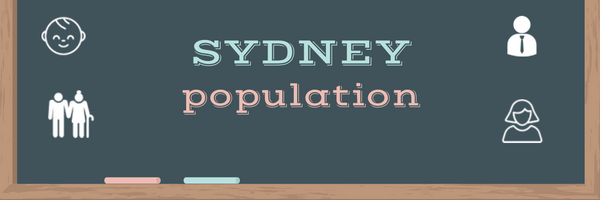Population clock
On 3 August 2018 at 18:56:32 (Canberra time), the resident population of Australia is projected to be: 24,995,634 This projection is based on the estimated resident population at 31 December 2017and assumes growth since then of:
25 Million Population Milestone
Sydney is the capital city of New South Wales. Sydney is Australia’s most populated city with an estimated population of over 5 million people. The metropolitan area has about 650 suburbs that sprawl about 70 km to the west, 40 km to the north, and 60 to the south. People move in and out of Sydney every year, but the number of newcomers usually exceeds that of people who leave. Based on our research Sydney population will reach 5.64 million by June of 2018. The calculation is based on the average growth rate of 4.95% over last 7 years since 2011. Population Growth of SydneyLooking back last seven years of Sydney’s population, the growth rate is very consistent and strong ranging from 1.89% to 10.88%, adding around 90,000 to 467,000 people each year to the overall population. Sydney has recorded the strong population growth in 2013 (10.88%), which is the highest in Australia. Demography of SydneyAccording to Australia census, Sydney is an extremely diverse city, with a huge number of ethnic and cultural groups living there .The top five ancestries for people in Sydney are: Australian, English, Irish, Scottish and Chinese. The top five languages (other than English) spoken in Sydney are: Arabic, Mandarin, Cantonese, Vietnamese and Greek. The top six countries of birth for people in Sydney are: Australia, England, China, New Zealand, India and Vietnam. The religious makeup of Sydney is: 26.6% No religion, 22.6% Religious affiliation not stated, 16.1% Buddhism, 14.6% Catholic, 4.7% Anglican, 2.4% Hinduism, 2.3% Christian, 1.8% Presbyterian and Reformed, 1.8% Uniting Church, 1.6% Islam. Population Density of SydneySydney’s population density is 400 people per kilometer, which is ranking 3rd most populated city in Australia after Melbourne and Adelaide.
Occupations and IndustriesAccording to Australia Bureau of Statistics, the main occupations of people living in Sydney are 32.9% Professionals, 14.9% Managers, 12.0% Clerical & administrative workers, 11.7% Community & personal service workers, 8.8% Sales workers, 8.4% Technicians & trades workers, 7.4% Labourers, 3.0% Occupation inadequately described/ Not stated, 1.0% Machinery operators & drivers. The main industries people from Sydney work in are 21.6% Accommodation and food services, 15.9% Professional, scientific and technical services, 13.3% Financial and insurance services, 9.3% Retail trade, 5.6% Health care and social assistance, 4.5% Administrative and support services, 3.5% Information media and telecommunications, 3.4% Education and training, 3.3% Manufacturing. Facts About Sydney
Northern Beaches People tables are based on a person's place of usual residence on Census night
In the 2016 Census, there were 252,878 people in Northern Beaches. Of these 48.8% were male and 51.2% were female. Aboriginal and/or Torres Strait Islander people made up 0.6% of the population. View the data quality statement for Place of Usual Residence (PURP)People — cultural & language diversity demographics & education cultural & language diversity employment
The most common ancestries in Northern Beaches (A) (Local Government Areas) were English 29.2%, Australian 22.3%, Irish 9.2%, Scottish 7.5% and Italian 3.5%. Respondents had the option of reporting up to two ancestries on their Census form, and this is captured by the Ancestry Multi Response (ANCP) variable used in this table. Therefore, the total responses count will not equal the persons count for this area. Calculated percentages represent a proportion of all responses from people in Northern Beaches (A) (Local Government Areas) (including those who did not state an ancestry). View the data quality statement for Ancestry (ANCP)
In Northern Beaches (A) (Local Government Areas), 65.8% of people were born in Australia. The most common countries of birth were England 7.9%, New Zealand 2.4%, China (excludes SARs and Taiwan) 1.4%, South Africa 1.4% and United States of America 1.0%. View the data quality statement for Country of birth (BPLP)
In Northern Beaches (A) (Local Government Areas), 42.6% of people had both parents born in Australia and 36.0% of people had both parents born overseas. View the data quality statement for Country of birth of father and/or mother (BPPP)
In Northern Beaches (A) (Local Government Areas), the most common countries of birth for male parents were Australia 49.6%, England 10.7%, New Zealand 3.4%, Italy 2.3% and China (excludes SARs and Taiwan) 2.2%. View the data quality statement for Country of birth of father (BPMP)
In Northern Beaches (A) (Local Government Areas), the most common countries of birth for female parents were Australia 51.7%, England 9.8%, New Zealand 3.2%, China (excludes SARs and Taiwan) 2.2% and Italy 1.9%. View the data quality statement for Country of birth of mother (BPFP)
The most common responses for religion in Northern Beaches (A) (Local Government Areas) were No Religion, so described 33.7%, Catholic 24.2%, Anglican 17.8%, Not stated 8.4% and Uniting Church 2.7%. In Northern Beaches (A) (Local Government Areas), Christianity was the largest religious group reported overall (58.9%) (this figure excludes not stated responses). View the data quality statement for Religious affiliation (RELP)
In Northern Beaches (A) (Local Government Areas), 79.8% of people only spoke English at home. Other languages spoken at home included Italian 1.3%, Mandarin 1.3%, Portuguese 1.0%, French 0.9% and German 0.9%. View the data quality statement for Language spoken at home (LANP)People characteristics - Aboriginal and/or Torres Strait Islander peoplesPeople characteristics dwelling characteristics
In Northern Beaches (A) (Local Government Areas), 51.5% of Aboriginal and/or Torres Strait Islander people were male and 48.5% were female. The median age was 26 years. | ||||||||||||||||||||||||||||||||||||||||||||||||||||||||||||||||||||||||||||||||||||||||||||||||||||||||||||||||||||||||||||||||||||||||||||||||||||||||||||||||||||||||||||||||||||||||||||||||||||||||||||||||||||||||||||||||||||||||||||||||||||||||||||||||||||||||||||||||||||||||||||||||||||||||||||||||||||||||||||||||||||||||||||||||||||||||||||||||||||||||||||||||||||||||||||||||||||||||||||||||||||||||||||||||||||||||||


No comments:
Post a Comment